Starry Night Over the Rhone by Vincent Van Gogh
The riddle of the painting

Starry Night Over the Rhone by Vincent van Gogh at the Musée d’Orsay – Photograph Raymond Martinez 2003
Questions about the painting “Starry Night Over the Rhone” by Vincent Van Gogh

Origin of the painting
The painting was painted in Arles on the banks of the Rhône at the end of September 1888
Technique : oil on canvas – Dimensions (H × L) : 72,5 cm × 92 cm
Localisation : Musée d’Orsay, Paris, France (source Wikipédia) 1
Description :
The painter represented Arles seen at night with the Rhône, the river running trough the city. The lighting from the quays is reflected over the river. The silhouettes of the roofs and steeples are standing out against the blue of the sky. In the foreground, we distinguish a couple and moored boats. In the sky in shades of blue, multiple stars where the constellation of the Great Bear appears in the center.
Note: Van Gogh is one of the few painters to have depicted the starry sky, two more of his paintings also depict the night sky:
“Café terrace at night” painted in Arles in September 1888
“The Starry Night” painted in Saint Rémy de Provence in June 1889
Presupposed of the painting:
- Vincent Van Gogh painted “Starry Night Over the Rhone” at the end of September 1888
- This work was painted in Arles, on the banks of the Rhône, near Place Lamartine where his house (La Maison Jaune) was located.
Since the artwork was painted on site, we can imagine that he will not have been able to walk a long way in the night with his painting equipment. Candles or even a street lamp could have helped him light up such a place that was certainly very little lit at this time.
Letter to Wilhelmina
The date on which Vincent van Gogh painted this picture is confirmed by a letter 2 sent to his sister Wilhelmina dated September 9 and 16, 1888 in which he states his intention to paint the starry night:
“I definitely want to paint a starry sky now. It often seems to me that the night is even more richly coloured than the day, coloured in the most intense violets, blues and greens.
Letter to Theo
Then a letter 3 to his brother Theo dated September 29 when the painting is finished :
“Included herewith little croquis of a square no. 30 canvas — the starry sky at last, actually painted at night, under a gas-lamp. The sky is green-blue, the water is royal blue, the areas of land are mauve. The town is blue and violet. The gaslight is yellow, and its reflections are red gold and go right down to green bronze. Against the green-blue field of the sky the Great Bear has a green and pink sparkle whose discreet paleness contrasts with the harsh gold of the gaslight. Two small coloured figures of lovers in the foreground”
Here is a sketch attached to the letter:
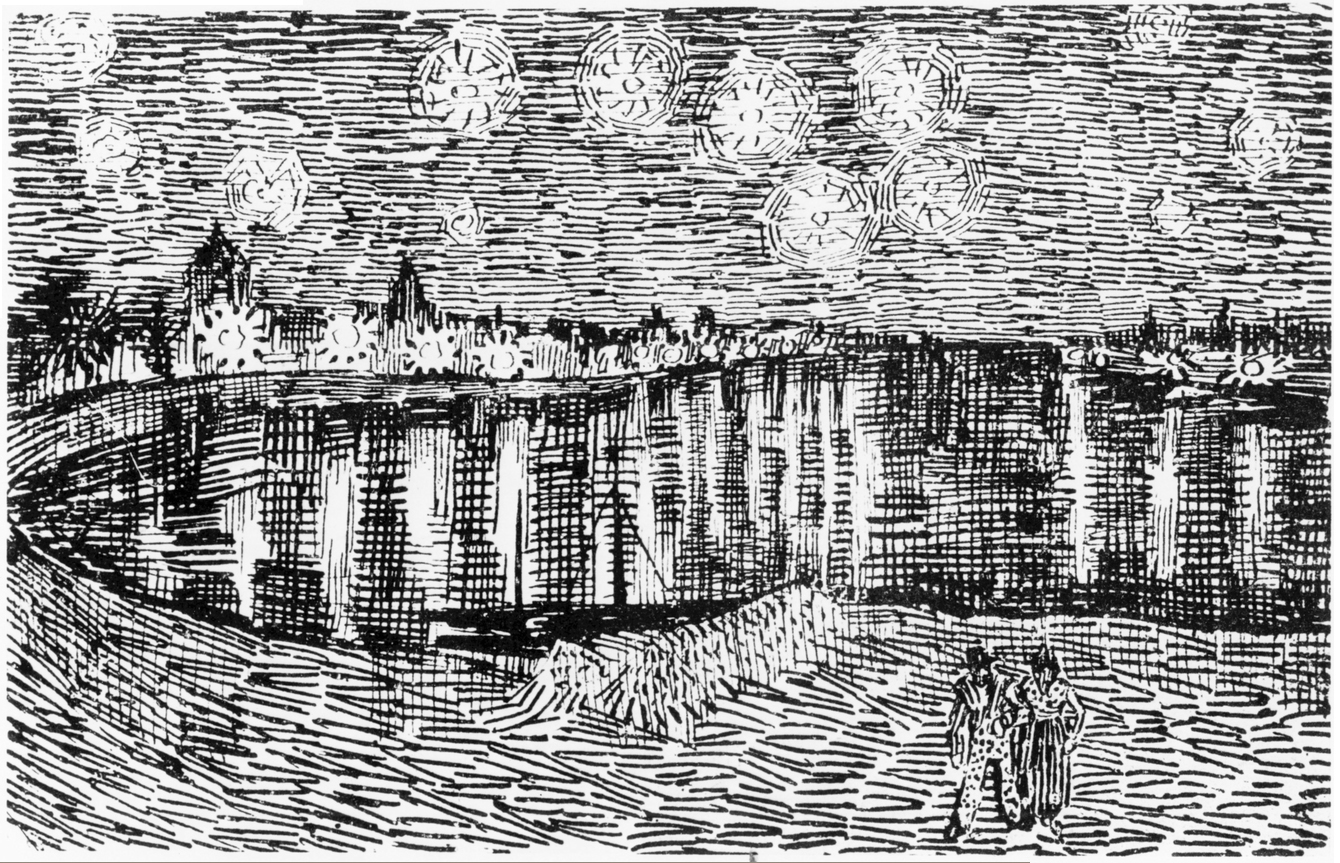
Letter to Eugene Boch
Finally a letter 4 to his friend the painter Eugène Boch dated October 2, 1888:
«And lastly, a study of the Rhône, of the town under gaslight and reflected in the blue river.
In this letter, Van Gogh attached this sketch of the painting.
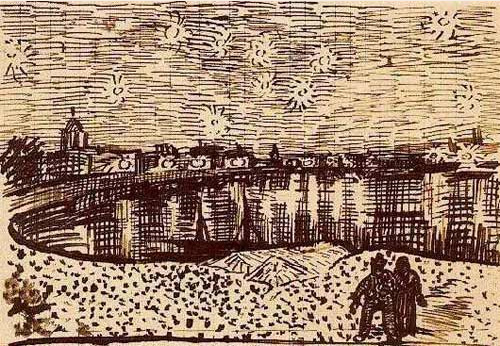
Where did Vincent van Gogh put his easel?
As for where the painting was painted, a sentence from the letter to his sister indicates that he certainly painted it on the spot: « Cela m’amuse énormément de peindre la nuit sur place. Autrefois on dessinait et peignait le tableau le jour d’après le dessin. Mais moi je m’en trouve bien de peindre la chose immédiatement. Il est bien vrai que dans l’obscurité je peux prendre un bleu pour un vert, un lilas bleu pour un lilas rose, puisqu’on ne distingue pas bien la qualité du ton. Mais c’est le seul moyen de sortir de la nuit notre conventionnelle avec une pauvre lumière blafarde et blanchâtre, alors que pourtant une simple bougie déjà nous donne les jaunes, les orangés les plus riches. »
We can compare the current landscape with that of the painting:
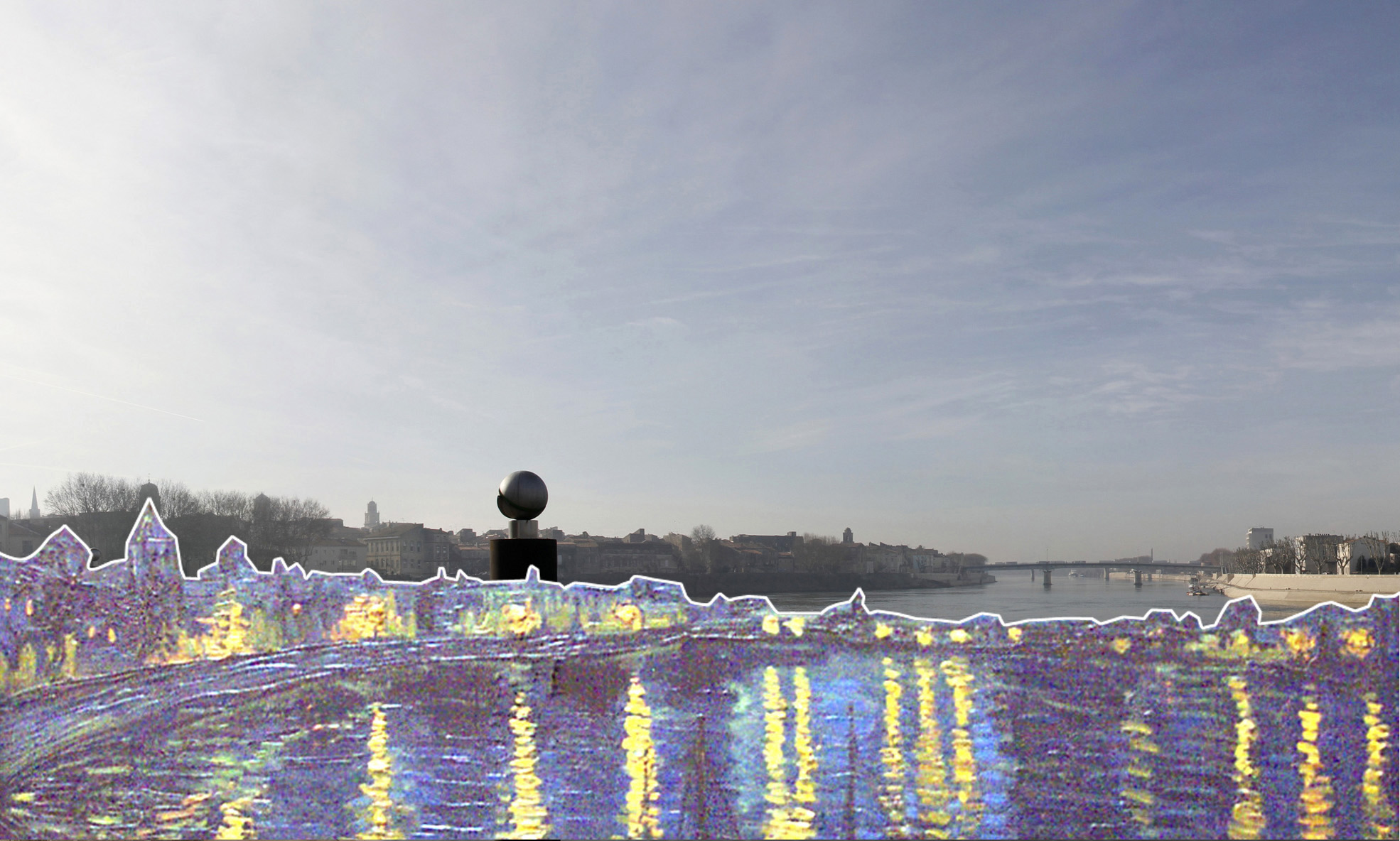
Photograph and assembly Raymond Martinez © 2012
The positioning takes into account the steeples of the church of St Julien and St Martin du Méjan, the bend of the Rhône and the bridge of Trinquetaille.

The angle in which the landscape of the painting is inscribed – Image Google Earth
The red circle represents the supposed location of Van Gogh’s easel,
Coordinates: 43° 40′ 56″ N 4° 37′ 48″ E – Table Orientation: South West
Now let’s take a look at the starry sky in the artwork:

By comparison, thanks to the Stellarium software,
we can reconstruct the sky visible in Arles at the end of September 1888.
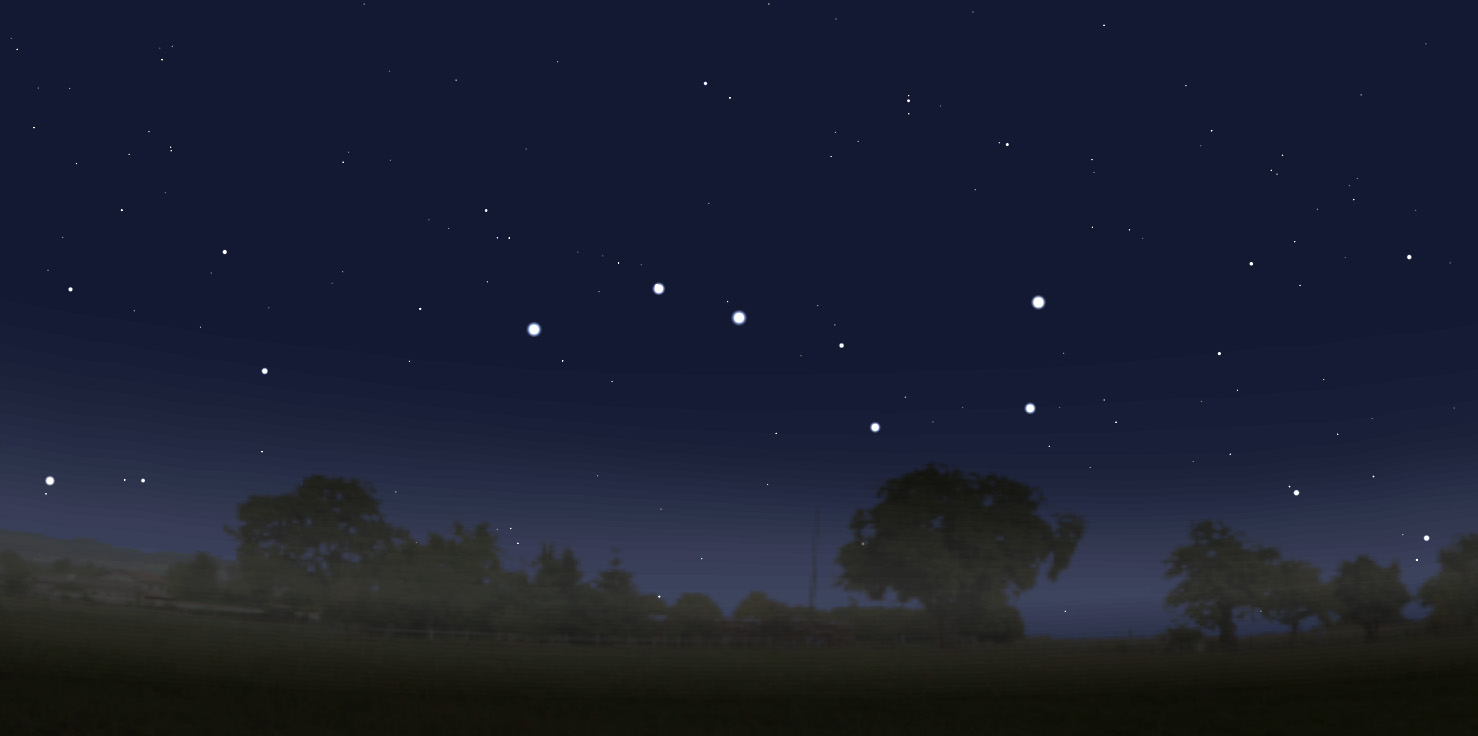
This view represents the sky visible in Arles on September 26, 1888 at 11:15 p.m.
with a North North West orientation
As you can see, the Big Dipper is in the same position as in the painting even though the lowest star is shifted to the right.

This is the sky Van Gogh saw over the city when he painted the picture
Vincent van Gogh decided several weeks ago to paint a starry night. When he came to realize his project, he chose to represent a known constellation, the Great Bear, which is also rich in bright stars.
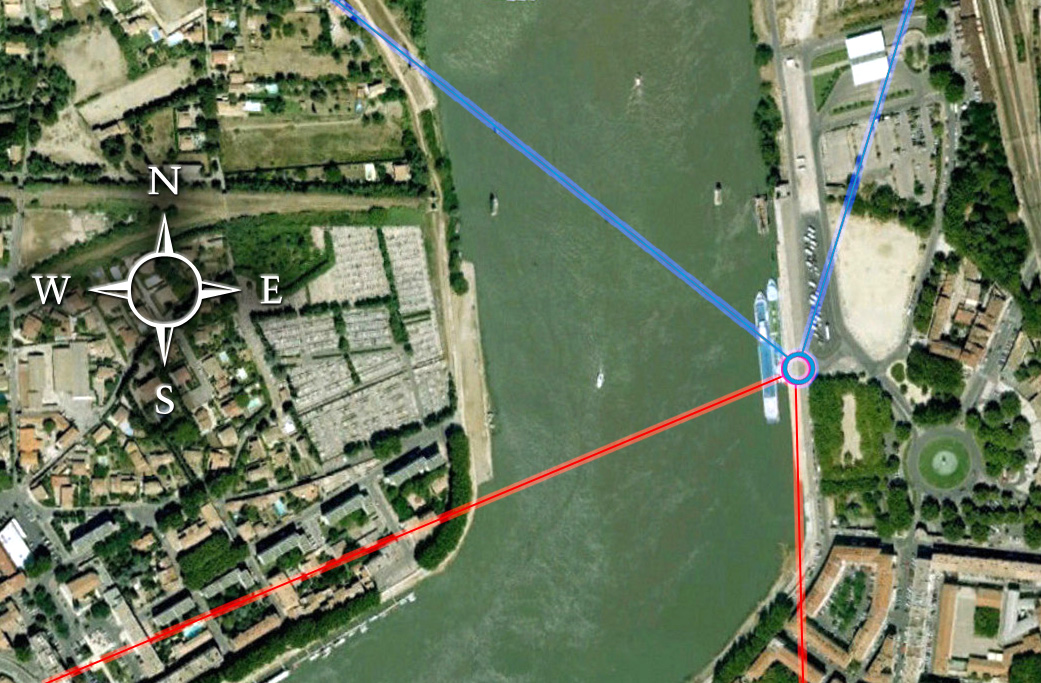
This view on Google Earth image represents in red the angles inscribed by the landscape of the city and in blue the angle of the celestial landscape
Mischievous Van Gogh
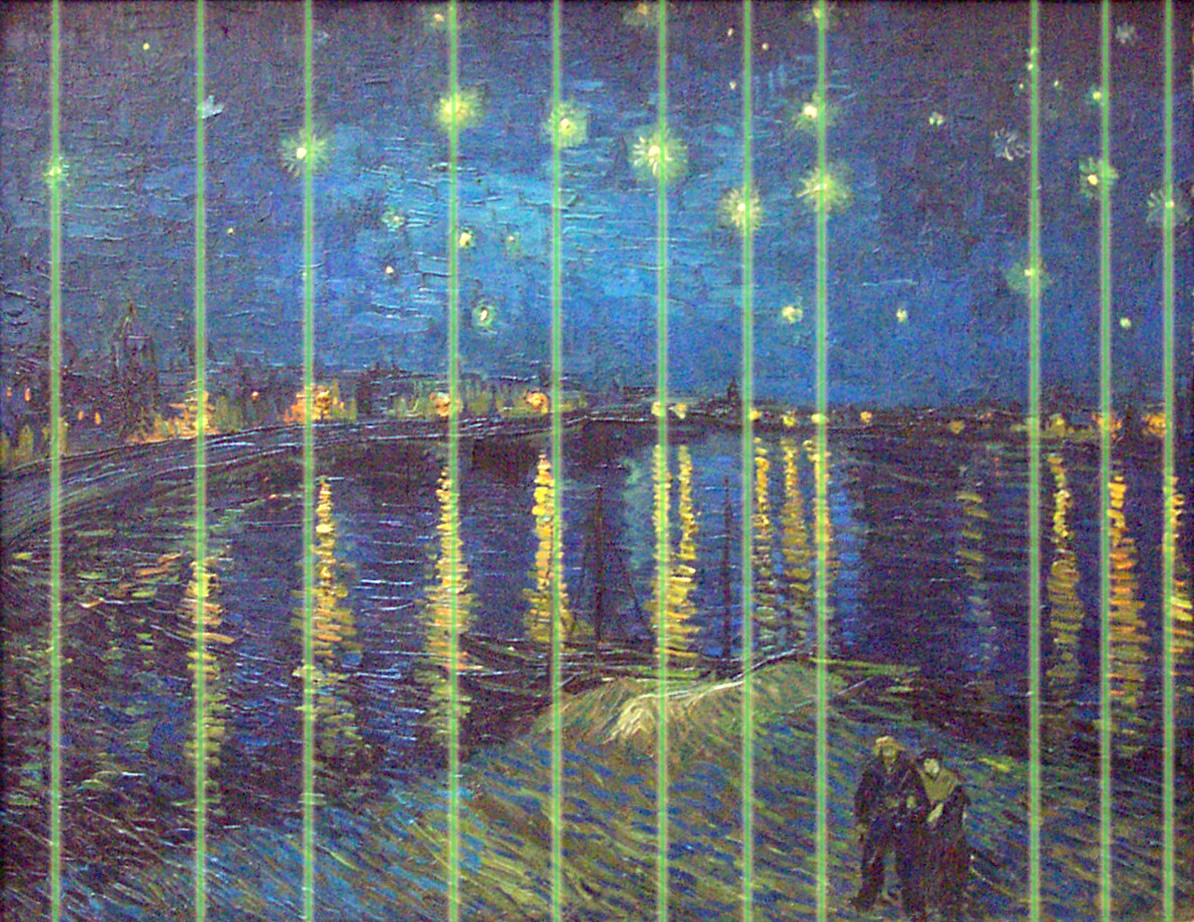
It is interesting to note that Vincent Van Gogh has, with a certain mischievousness, positioned the stars in alignment with the street lamps. This gives the illusion that the reflections on the Rhone are those of the stars. The couple in the foreground thus find themselves under an area without reflections because this is the place where the river is crossed by the bridge and there are no bright stars above. The couple remains in the shadows as if the painter wanted to preserve their privacy. We also notice that the man on the arm of the Arlesian woman is wearing a yellow hat reminiscent of some self-portraits by Vincent Van Gogh.
The flower stars
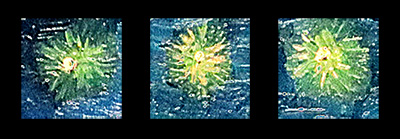
For several months, Van Gogh had been announcing in his letters his intention to paint the starry sky. 2 – 5
When he decided to do it, he had to invent a solution to paint the stars. Indeed, very few other painters had dared to tackle this subject before him and he therefore had to innovate. He painted the painting “Café Terrace at Night” during the first half of September 1888. He decided to represent the stars with small yellow discs that he surrounded with light blue. In “Starry Night Over the Rhone” painted a few days later, his technique had been refined, the discs were surrounded by fine brushstrokes that resembled petals. Their sizes symbolized the brightness of the star. He thus gave each star the appearance of a flower. He applied the same rule when representing the sun which, surrounded by its yellow rays, gave it the appearance of a sunflower. In this painting, we note the frequent use of lemon yellow to represent the “petals”. The blue used for the background of the sky was probably not completely dry, which means that the petals, under the brushstrokes, turn into shades of green.
In the other painting entitled “The Starry Night” painted in Saint Rémy de Provence in 1889, his technique has evolved, the brightness of the stars is symbolized by concentric dotted circles.
Mysterious Van Gogh
The question asked by the work :
The representation of the city and the river downstream is oriented towards the South West, however, The Big Bear cannot be visible in this direction because it is a circumpolar constellation visible only towards the North.
Why did Vincent Van Gogh depict the Big Bear when it was not visible from that direction?
Some of the hypotheses considered include:
- The sky was overcast that day and he represented the stars from memory.
- He found the sky above the city poor in stars and preferred to represent a constellation he knew well.
- He positioned himself facing the Rhône with the canvas parallel to the bank. In this case, he had on his left the city illuminated by the street lamps with the reflections on the downstream of the river and on his right, upstream, the Big Dipper. He then, on the canvas, merged the two planes.
In the latter case, he made a landscape at the bottom of the painting and another at the top.
This is an unusual situation because while painters usually represent a point of view, he grouped the space around him in a single frame.
Visionary Van Gogh
Through this unprecedented attitude and this capacity for synthesis,
Vincent Van Gogh upsets the canons of painting of his time and announces the future evolutions of art, cubism, surrealism, abstraction…
Impression:
Discovering Vincent Van Gogh’s motivations, I felt like I was intruding into the painter’s mind. I felt dizzy as if I could perceive a little better the will and personality of this artist so well-known and yet so mysterious.
Sources :
1 – the painting on Wikipedia : https://en.wikipedia.org/wiki/Starry_Night_Over_the_Rh%C3%B4ne
2 – Letter to his sister Wilhelmina “I definitely want to paint a starry sky now”: https://vangoghletters.org/vg/letters/let678/letter.html
3 – letter Theo N°691 : http://vangoghletters.org/vg/letters/let691/print.html
4 – letter Boch : https://eugeneboch.com/letter/
5 – Letter to Émile Bernard “A starry sky, for example, well — it’s a thing that I’d like to try to do…”: https://vangoghletters.org/vg/letters/let596/letter.html
This research used the Stellarium planetarium : https://stellarium.org/en/
© Raymond Martinez 2012
